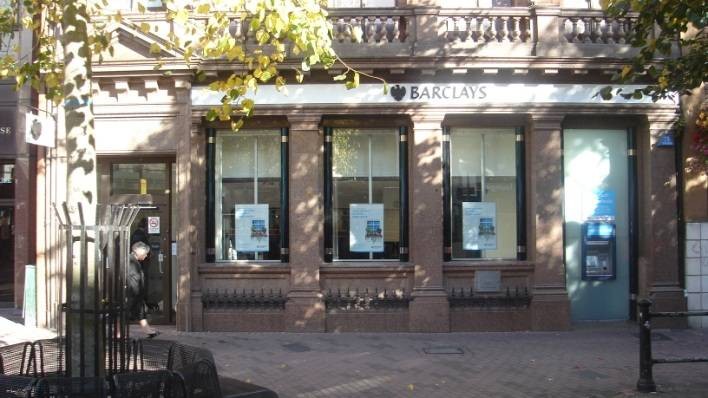
Barclays Group Archives
Barclays Group Archives are home to the records of Barclays PLC and its predecessors, dating from 1567 to the present day
Business historian Professor Leslie Hannah talks about Barclays' long history and its role in society during this time.
Barclays opened its first corporate banking office at Belfast in 1996, intended to provide services to local, British and international customers. The office was co-located with that of Barclays’ Mercantile subsidiary, which already operated a small office providing leasing and hire finance for corporate customers. BZW (now Barclays Capital) had also been providing finance for companies operating in the Province prior to this, though with no direct presence. Barclays had been providing its Direct Mortgage Service to customers in Northern Ireland from the late 1980s.
The press release for the 1996 opening stated that: ‘The new Barclays office in Bulloch House, 2 Linenhall Street, will provide a wide range of corporate banking services to Northern Ireland businesses, including treasury, trade and lending….it will also provide banking support for British and Irish based businesses trading in Northern Ireland.’
The first Barclays-branded branch in Belfast, 2007
Barclays gained a direct retail presence in Northern Ireland in 2000, through its acquisition of Woolwich PLC, the former building society, which had been ‘the first English Society to be represented both in Northern Ireland and Scotland’, opening an office in Belfast as long ago as 1929, at 58 Donegall Street, subsequently at 40 Victoria Square (1933), with prominent local estate agents W F Neill & Co. acting as the Society’s representatives in the Province. Though this was listed as a branch in the annual reports, it was in effect an agency arrangement.
By 1960 business had expanded considerably, with some 2,000 mortgage accounts, so in 1961 a full branch was opened at Woolwich House, 35-39 Royal Avenue (1961), which moved subsequently for lack of space to 17, Castle Place – which still houses the main Barclays branch today. A network of full branches was developed subsequently as follows: Lisburn (1975), Coleraine (1977), Bangor (1979); Downpatrick, Newry and Portadown (all 1988), an additional branch in Belfast, as well as a number of small agencies and sub-branches across the Province. The Temperance Permanent Building Society, which eventually merged with Woolwich, also had a presence in Northern Ireland from at least the early 1950s.
In 2007 UK Woolwich branches began to be re-branded as Barclays, two in Northern Ireland (Belfast and Lisburn) being in the pilot group of seven. Initially the Belfast branch at Castle Place was only permitted to have black signage outside (rather than the usual Barclay Blue), in order to conform to listed building regulations, though this has since been replaced with the blue eagle sign.
The conversion and upgrading of the ex-Woolwich branches meant that UK Business Banking could offer a full cash management and clearing service to its customers.
In 2007 it was also announced that Premier Banking was to be made available to customers through the new branches in the Province.
In 2009 Barclays Commercial Banking was successful in bidding for the lead role in the first PFI hospital deal in the Province, for the new acute hospital at Enniskillen. Barclays’ share of the loan was £50m.
To supplement its branches, Barclays announced in December 2012 that personal customers would also be able to operate their accounts at Post Offices throughout Northern Ireland.
In 2012 Barclays also announced the completion of its re-banking of Belfast City Council, with henceforth delivering the whole of Northern Ireland’s largest council’s banking needs. A similar deal was signed with North Down Borough Council the same year.
In 2013 Barclays announced the completion of a £2.7m financing package with Triangle Housing Association, aimed at supporting the delivery of around 180 social housing units in the Province over three years.
Also in 2013 Barclays was asked to chair the working group of banks tasked with delivering the Northern Ireland government’s Agri-Food Loan Scheme, designed to boost lending to the increasingly important Agri-Food sector, by helping local food producers, as part of an integrated supply chain, to access the finance they need to invest in the farm buildings necessary to increase supply of the primary produce for processing. Barclays is one of the largest banks in the UK agricultural sector, and has over 300 years of experience of lending to the sector, the success of which is founded on offering farmers flexible financial solutions.
